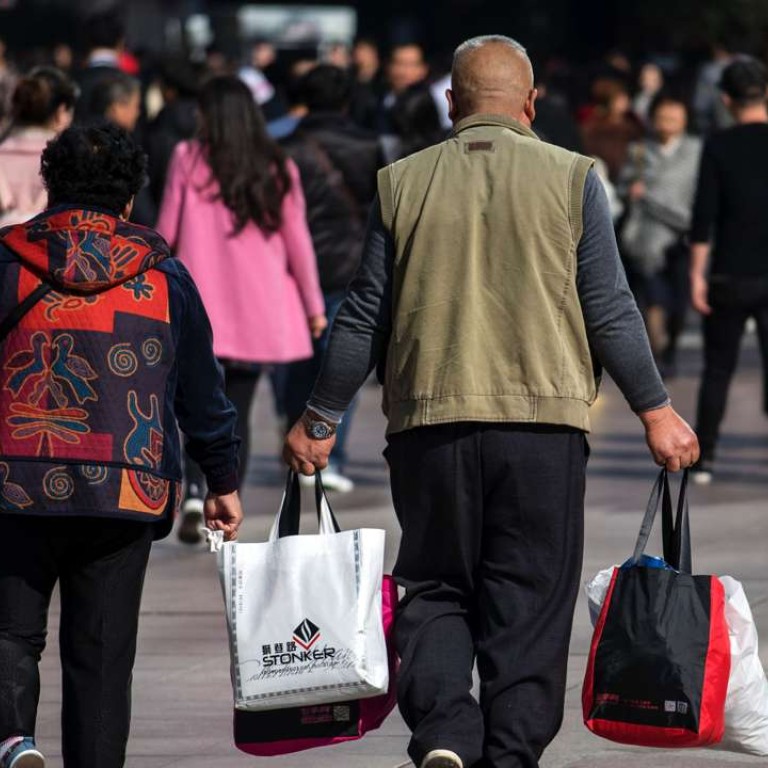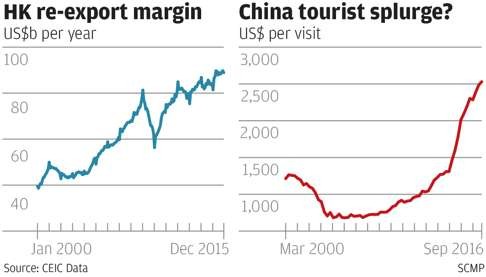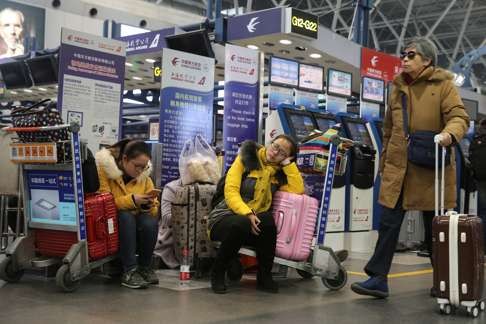
Money will find a way to worm through any barrier
Mainlanders are determined to take their funds abroad as the yuan weakens and have set up several schemes, including the magical HK export inflation and frugal splurging tourist
As a result of the yuan’s weakening, many companies and ordinary citizens had been devising schemes to take their currency out of the country before it deteriorated further.
SCMP, Dec. 20
... and are still devising such schemes.
Let’s look at some ways they take their money out without once having to apply to the authorities for permission to do so.
Our first scheme involves Hong Kong. Oh what a surprise!
We export about HK$3.5 trillion worth of goods a year. The reason you see so few signs of the industries behind these exports is that 98.8 per cent of them consist of re-exports, goods that we import and send straight back out again.
While we add nothing to the goods themselves, we do make adjustments to the paperwork. On the way out, these goods are worth about 20 per cent more than they were on the way in. We know they are because that’s the valuation surplus you get when you deduct the value of retained imports. Marvellous, isn’t it, how you can make something out of nothing?

One reason for indulging in this magic is that the exporter pays little or no profit tax on the mainland as he generates only minuscule profits there. He also pays no profit tax in Hong Kong because we acknowledge that no work was done on the goods here. A nod’s as good as a wink, they say.
The first chart shows you that the value of this re-export margin has risen steadily, and was running at US$88 billion a year at the end of 2015, the latest date for which I can get full data. It’s all foreign currency that no one in Beijing has seen leave the country.
Then we get an anomaly in China’s trade in services, which is running in deficit to the tune of about US$220 billion a year at the moment, almost all of it attributable to a deficit in tourism.
Superficially it looks a little odd. The latest figures show inbound and outbound tourists about equal in number but mainlanders spend a lot more money abroad than visitors to the mainland, and it results in a big deficit in tourism receipts.

This might not be unusual except for one further anomaly. Outbound tourist numbers show little to no growth at present but the official figures say their spending abroad is growing at a record pace.
Why should this be happening when retailers in the biggest markets for mainland tourists say there’s actually been a pronounced slowdown in tourist sales? The second chart shows you what the figures suggest is the expenditure per person per visit abroad.
My guess is that there’s no such thing as mainland tourist expenditure abroad in the vicinity of US$100 billion a year; it’s capital flight at the personal, individual level.
I can’t prove it, of course, just as I can’t prove that Hong Kong’s re-export margin is capital flight. I just rely on that old adage that where there is smoke, there is fire.
There’s enough smoke out there to suspect more fires than just the two I can cite.

